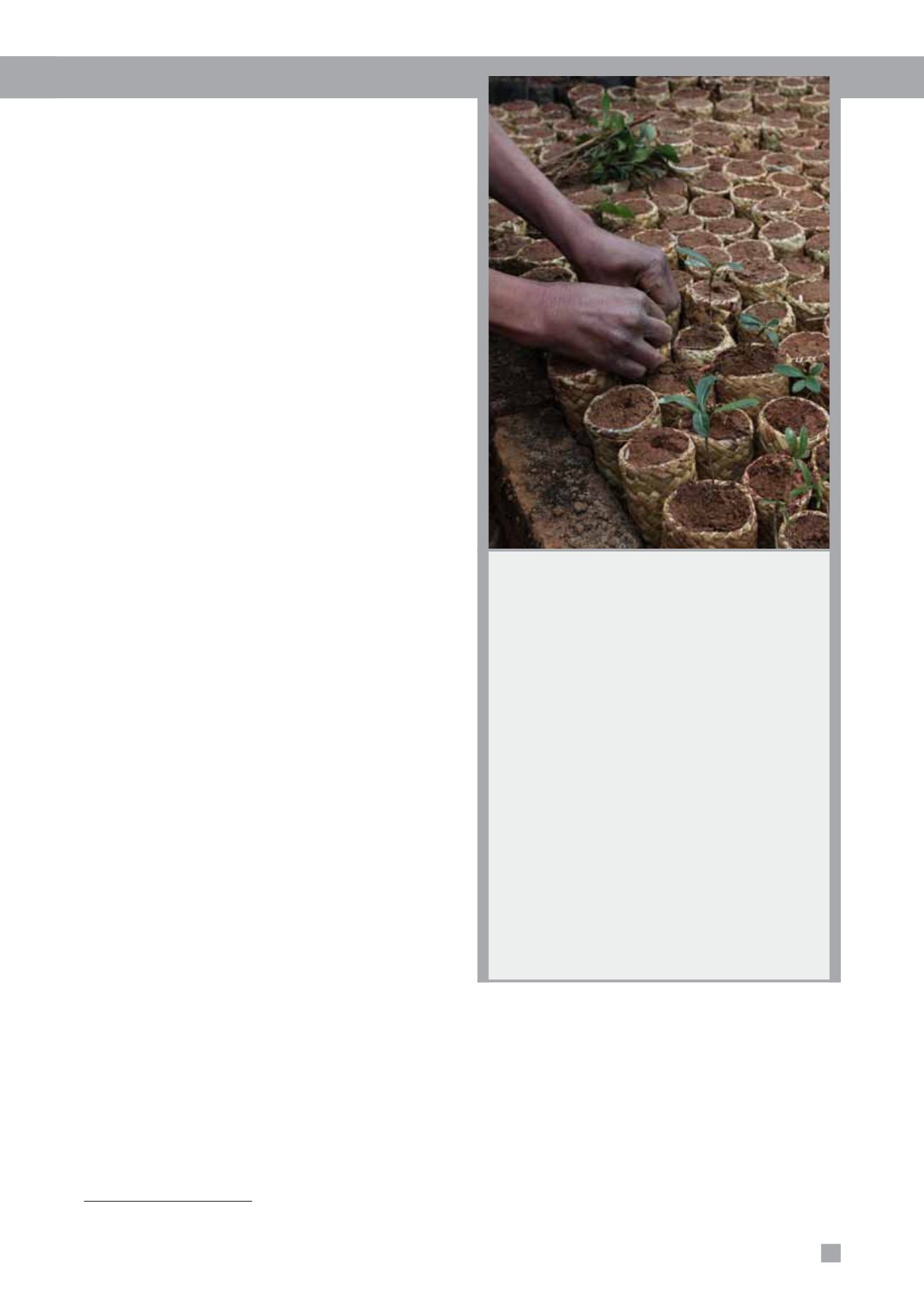
2010
AMBATOVY SUSTAINABILITY REPORT
21
C1. Environmental Performance
The 6,800 ha
7
of the Ankerana forest, plus the mine
conservation forest and offset sites, provide a total combined
area of 12,000 ha of newly protected land (see table 1).
This area is over six times the mine footprint and five times
the approximately 2,400 ha of total forest land that will be
reclaimed after mining operations are complete. The small
amount of land that is not reclaimed represents the area
occupied by legacy infrastructure, such as roads that will
remain for the beneficial use of communities. Ultimately, a net
gain of 11,900 ha of conserved land is anticipated, most of
which will be forested.
As the Project develops, the ESIA is being revisited to ensure
that no residual impact on biodiversity is being neglected. Any
further residual impacts identified will be accounted for in the
biodiversity offsets calculation.
Monitoring
Biodiversity monitoring programs have been established to
deal with uncertainties regarding forecasted Project impacts.
Thus, the Environmental Management System (EMS)
includes monitoring to ensure that impacts are in accordance
with projections. However, one of the objectives of an EMS
is to promote continuous improvement and incorporate
the lessons of adaptive management as new information
becomes available. For each program, detailed monitoring
programs are developed, which include key monitoring
indicators and regular intervals for conducting studies.
Priority Species
Priority species are identified based on two factors: those
species that are considered endangered and those that are
believed to be endemic only to the mine region. As a result
of their rarity, these species are given special attention in our
biodiversity management actions. For detailed information,
see Annex 3: Priority Species.
Rehabilitation
Pipeline Right-of-Way (ROW) Reforestation Program
The pipeline avoids native forests wherever possible and
only passes through near-primary zonal forest within the first
two kilometres of the mine site. This loss of zonal forest will
be offset in the near future as the forest is rehabilitated and
residual impacts are accounted for in the biodiversity offsets
program. After construction, forest connectivity in specific
areas will be re-established through targeted reforestation
activities aimed at linking and integrating the remaining
forests into a fully functioning ecosystem.
Mine Footprint Rehabilitation
Ambatovy will restore a multifunctional forest on the mine’s
footprint through progressive restoration. The rehabilitation
program has been designed in close consultation with local
stakeholders. A ten-year rehabilitation plan is currently
being implemented. An industrial-scale production nursery
Rehabilitating a Critical Piece of
the Pipeline
As a pilot project in 2010, the Environment Department
at the mine site oversaw the rehabilitation of the first
two kilometres of the pipeline, which covers a sensitive
transitional zone between the mine area and the
pipeline route. With careful planning and technical
preparation on species, the Environment Department
oversaw local workers who replanted four hectares
surrounding the first section of the pipeline.
One of the critical elements of this effort was the
attention paid to endemic species, particularly species
of concern (SOC). Mitigation efforts were applied
to ensure that the endemic and SOC plants were
preserved and reintroduced into the rehabilitation
zone. This included transplantation, cryopreservation,
micropropagation, and collecting and germinating
native seeds. By implementing “stratified plantation,”
a natural bridge was created between forest zones
that the mine area boundary straddles. Over a period
of three months, the team rehabilitated this area with
16,500 plants from 34 different species.
is under construction and will be operated as part of this
plan, complemented by community nurseries. A research
nursery, devoted to experimenting with a variety of species
and cultivation methods, will help identify optimal conditions
for successful rehabilitation. Community and factory-scale
nurseries will be constructed and operated as part of this plan
in 2011. The rehabilitation program has been aligned with
adjacent land use (i.e. the mine forest conservation zone). An
established, integrated management structure will be in place
by the time of mine closure.
7
The area of the Ankerana offset was stated as 11,600 ha in the BBOP case study and other publications. A review conducted in 2010 determined that this figure was too high,
possibly due to a cartographic error, and that the true area of remaining forest is 6,800 ha. Nevertheless, the Project will achieve a net gain of conserved land.


